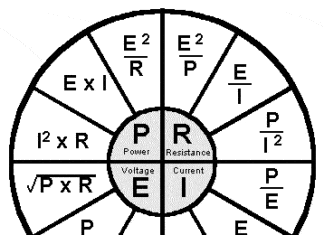Tag: Load
Electrical Terms and Equations
Dear Mr. Electrician: Can you recommend books on electrical terms and equations that include definitions? I found some technical books in the library, but the books use words and terms I do not understand. Do you have any suggestions?
Answer: Many electrical books about electrical terms and equations I read as a youngster are no longer published. They belonged to my father and were excellent for learning about electricity. A lot of them are still available as used books online.
NOTE: Some text links below go to applicable products on Amazon and eBay. As an Amazon Associate, I earn from qualifying purchases. Using my links for Amazon and eBay helps to keep this website FREE.
One of the best publishers of electrical books was Audels. I have a few that belonged to my dad and some that I bought for myself in the 1970s. The pictures are old, but the information is excellent.
Audels also published books for many other trades and engineers.
Table of Contents:
Electrical Terms and Definitions
Electrical Symbols
AC Equations
DC Equations
Flush Thrust Unit
If you plan to do electrical wiring in your home, you should understand wiring methods and code requirements. Article 100 in the National Electrical Code (NFPA 70) is entitled Definitions. It defines all electrical terms used for electrical installations and includes some equations.
See below for a short list of standard electrical terms with equations and definitions.
ELECTRICAL TERMS AND DEFINITIONS
Ampere is The unit of current strength. It is the current that, when passed through a solution of silver nitrate in water following certain specifications, deposits silver at the rate of 0.001118+ of a gram per second. Electrical current flow is measured in Amperes or Amps using an ammeter.
Ampere-Hour is the quantity of electricity transferred by a current of one ampere in one hour and is, therefore, equal to 3600 Coulombs.
BTU, or British Thermal Unit, is a unit of heat energy and is defined as the amount of heat necessary to raise the temperature of one pound of water one degree Fahrenheit. BTU's x 2.93 + 10,000 = Kilowatt hours.
Top Of Page
Circular Mil is the unit of cross-section used in the American Wire Gauge. "Mil" means one-thousandth of an inch (0.001 inches). It is the area of a circular wire with a one Mil diameter.
The Circular Mil-Foot is a unit circular conductor one foot in length and one Mil in diameter.
Coulomb - The quantity of electricity transferred by a current of one Ampere in one second.
Farad - The capacity of a condenser in which a potential difference of one volt causes a charge of one Coulomb of electricity.
Flush Thrust Unit, or FTU, is a fictional unit of measurement fabricated by John Grabowski. A Flush Thrust Unit is for determining the flushing capabilities of a toilet. The calculation to determine a toilet's Flush Thrust Units includes variables such as water pressure, water temperature, tank volume, the diameter of the discharge tube, the height above sea level, and last night's supper. This is more of a plumbing calculation than an...
